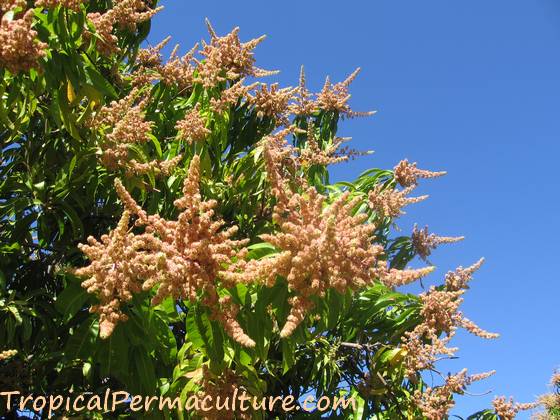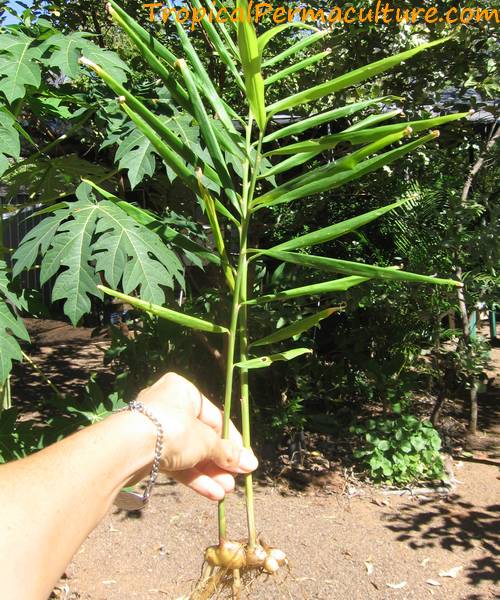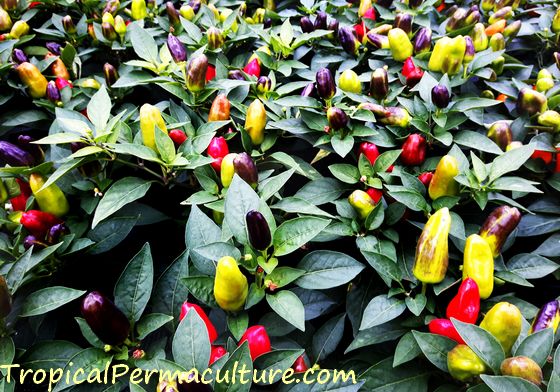Growing Coriander/Cilantro (Coriandrum Sativum)
How To Grow Coriander
Growing coriander is just as easy as growing cilantro. No wonder, it's the same plant...
Coriander or Cilantro? What is Coriander?
It's simple: the name cilantro refers to the leaves and the name coriander to the seeds. Some countries call both coriander, so coriander leaf is nothing else but cilantro.
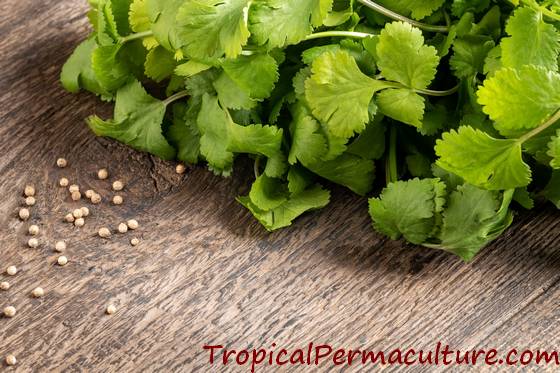
Coriander is a pretty, annual herb with feathery leaves and white umbrella type flowers.
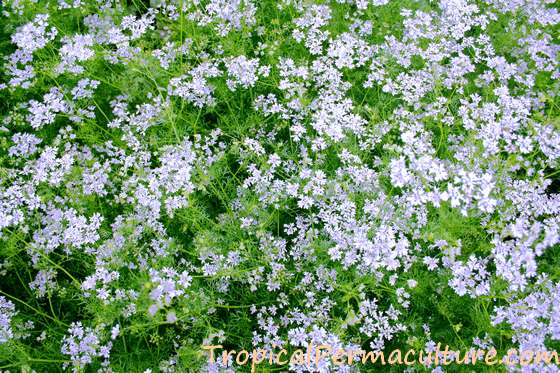
The small, ball shaped seeds are widely used to spice up Asian curries, soups and stews.
The fresh coriander leaf is also used for salads, soups and curries, and it tastes totally different from the seeds.
On the page about growing cilantro I showed you how to grow coriander leaf. I explained how to start coriander plants from seed and grow them to the leaf stage, the problems you may encounter when growing coriander, and how to harvest fresh coriander leaf.
If you haven't read it yet, go there now: growing cilantro.
On this page I want to continue and talk about the flowers and seeds.
Why Coriander Flowers Are Important
When coriander plants get stressed, or in hot weather, or once they reach a certain age, they stop making leaves and instead start developing a tall flower stalk. People who grow coriander mainly for the leaf sometimes cut this stalk out, in the hope of getting more leaves.
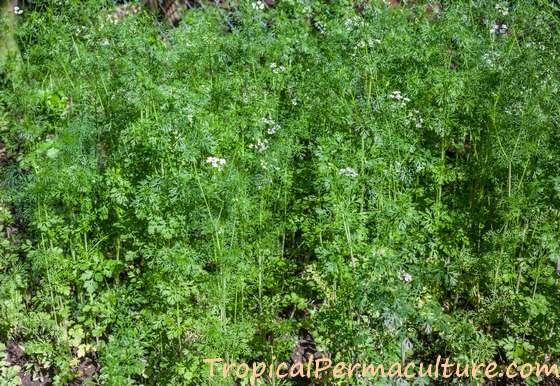
I suggest you leave at least some of your coriander plants to grow flowers, even if you are not interested in the seeds for cooking.
There is a good reason. Coriander flowers belong in the Umbelliferae family.
(Parsely, dill, carrots and fennel for example are in the same family.)
Coriander flowers are an important food source for beneficial insects, especially little parasitic wasps and predatory flies.
So to attract many beneficial insects you want lots and lots of coriander flowers growing in your garden.
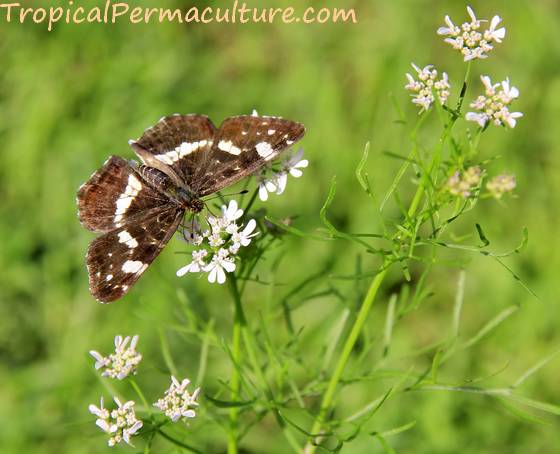
Ideally you want those coriander plants not only in a neat row in one bed, you want plants sprinkled through your other vegetables and under your fruit trees and in any other place you can fit them.
Coriander is not very greedy or competitive, the feathery leaves allow sun through for others, so there is no reason not to have coriander plants growing all through your garden!
And that is another reason to let your coriander plants flower and go to seed. The above is easy to achieve that if you have plenty of seed. That's why it is important to save the seed from your own plants. That way you will have enough to grow a row of coriander near your kitchen for easy use, and plenty left over to throw around everywhere else.
(Throwing it around is all it takes. Really. Not all seeds will grow, of course. But as long as you have enough coriander seed, there will be enough plants coming up to keep the beneficial insects happy. A seed packet from your gardening centre just won't cut it.)
Growing Coriander Seed
If you want to grow coriander for seeds you don't need to worry so much over your plants bolting to seed prematurely.
However, a coriander plant will of course produce more and better seed if it is big and strong. So it doesn't hurt to still observe all the advice from the previous page to let the coriander grow as big and strong as possible first.
Keep watering and feeding your coriander plants well, and wait for the flower to develop and set seeds. In hot weather this may take as little as 4 - 6 weeks from sowing, during cool weather it can take several months.
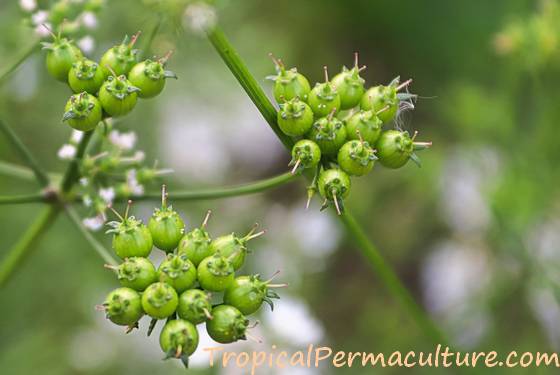
Harvesting Coriander Seed
Harvesting coriander seed is an easy affair. Just wait till the flower heads are dry.
Then cut the stalk, stick the whole thing upside down in a big paper bag and leave it in a dry spot for a couple of weeks.
(Most people recommend to hang it up. In my place it just sits around somewhere.)
After a couple of weeks you take the bag and shake it and bash it and all the coriander seeds should fall off and you can pull out the bare stalk.
If the seeds don't want to come off, you can help things along by crunching and rubbing the seed heads between your hands.
If too many little stalks come off as well, and in the latter case they will, you can clean the seed by swishing it around in a shallow bowl and blowing into it. That will lift out all the dry little bits while the seeds stay in the bottom.
Keep your coriander seeds in a cool dry place.
(Most people recommend an airtight container. In my place they just stay in that bag, except for what I want to use for cooking.)
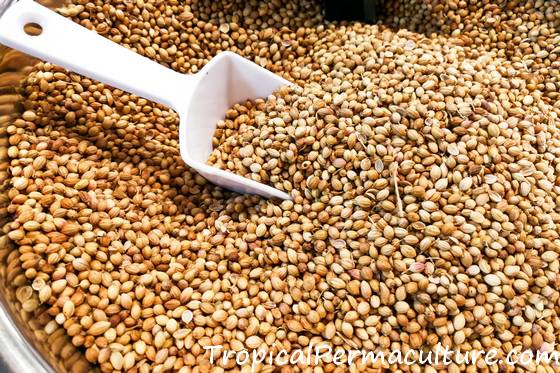
And now you should have enough coriander seed to cook with and still plenty left to throw around your garden next year!
(But do also grow a few coriander plants the old fashioned way, by sticking the seed in the ground where you want them, just in case...)
